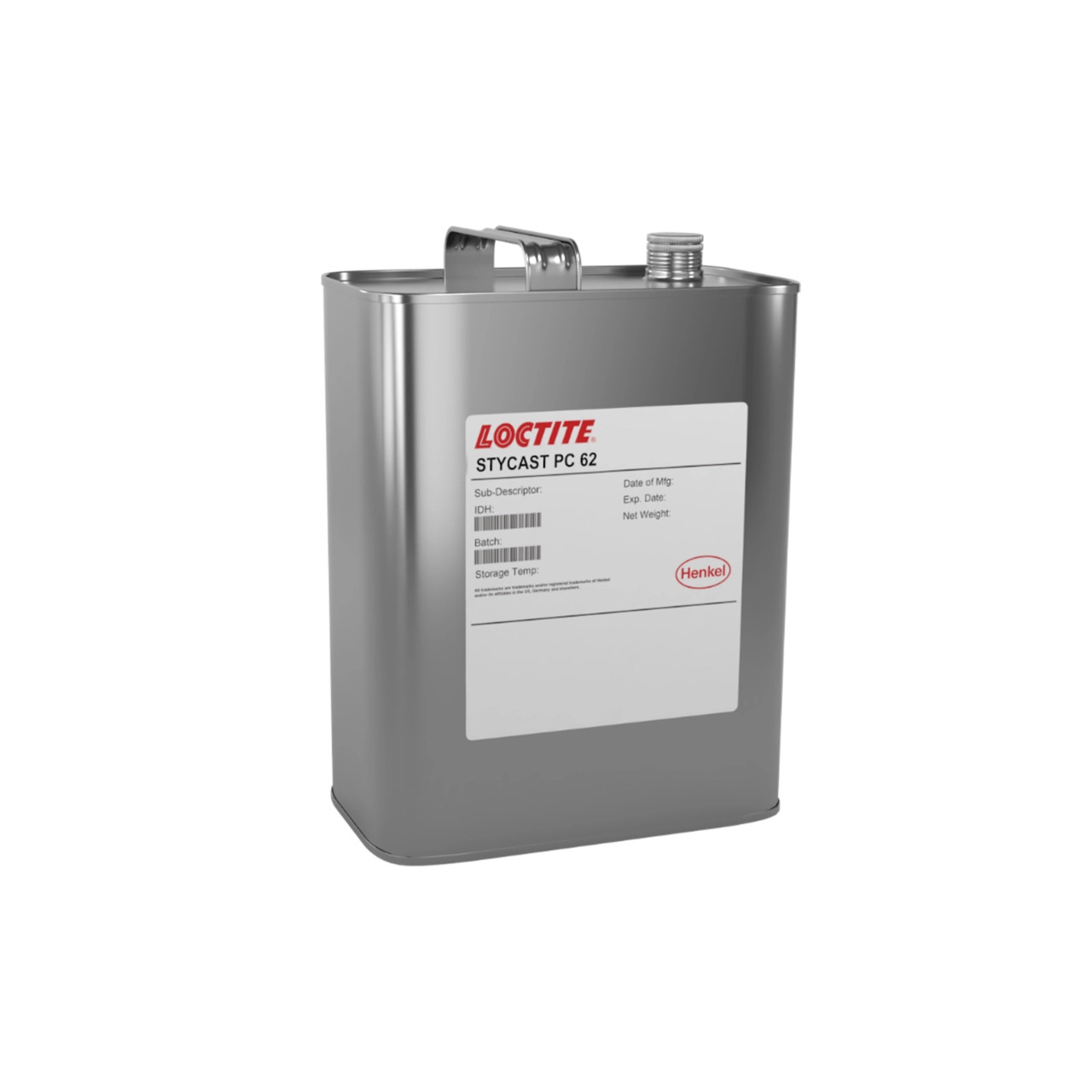LOCTITE STYCAST PC62
Harmonization Code : 3907.30.00.90 | Polyacetals, other polyethers and epoxide resins, in primary forms; polycarbonates, alkyd resins, polyallyl esters and other polyesters, in primary forms : Epoxide resins : Other
Main features
- Fluorescent under UV
- Toluene free
- Easily removable with soldering iron
Product Description
LOCTITE® STYCAST PC 62 conformal coating is a rapid-drying acrylic for circuit board protection applications. This colorless material is fluorescent under UV light and as a toluene-free alternative, it provides solid environmental and mechanical protection.
LOCTITE® STYCAST PC 62 with its superior toughness and abrasion resistance can operate in temperatures ranging from -40 to 125°C. It is easily removable with a soldering iron or suitable solvent and is typically used for Printed circuit boards.
Advantages of Loctite Stycast PC 62
- Fluorescent under UV light
- Toluene-free
- Superior toughness and abrasion resistance
- Easily removable
Cure Schedule
- 24 hours @ 25°C , in an oven
- 45 minutes @ 75°C
Technical Specifications
| General Properties | |||||
| Film Thickness Film Thickness Film thickness is the thickness of a backing film without taking into account any coatings or adhesive layers. It is measured in micron and the conversion factor to mil is 0.039. | 25-100 µm | ||||
| Specific Gravity Specific Gravity Specific gravity (SG) is the ratio of the density of a substance to the density of a reference substance; equivalently, it is the ratio of the mass of a substance to the mass of a reference substance for the same given volume. For liquids, the reference substance is almost always water (1), while for gases, it is air (1.18) at room temperature. Specific gravity is unitless. | 0.82 | ||||
| Physical Properties | |||||
| Viscosity Viscosity Viscosity is a measurement of a fluid’s resistance to flow. Viscosity is commonly measured in centiPoise (cP). One cP is defined as the viscosity of water and all other viscosities are derived from this base. MPa is another common unit with a 1:1 conversion to cP. A product like honey would have a much higher viscosity -around 10,000 cPs- compared to water. As a result, honey would flow much slower out of a tipped glass than water would. The viscosity of a material can be decreased with an increase in temperature in order to better suit an application | 52 mPa.s | ||||
| Electrical Properties | |||||
| |||||
| Dielectric Strength Dielectric Strength Dielectric strength is measured in kV per mm and is calculated by the Breakdown voltage divided by the thickness of the tested material. Those two properties go hand in hand and while Breakdown voltage is always thickness dependent, dielectric strength is a general material property. As an example, the dielectric strength of Polyimide is 236 kV/mm. If we place 1mm of Polyimide between two electrodes, it will act as an insulator until the voltage between the electrodes reaches 236 kV. At this point it will start acting as a good conductor, causing sparks, potential punctures and current flow. | 78 kV/mm | ||||
| Volume Resistivity Volume Resistivity Volume resistivity, also called volume resistance, bulk resistance or bulk resistivity is a thickness dependent measurement of the resistivity of a material perpendicular to the plane of the surface. | 1.04x10^16 Ohms⋅cm | ||||




